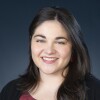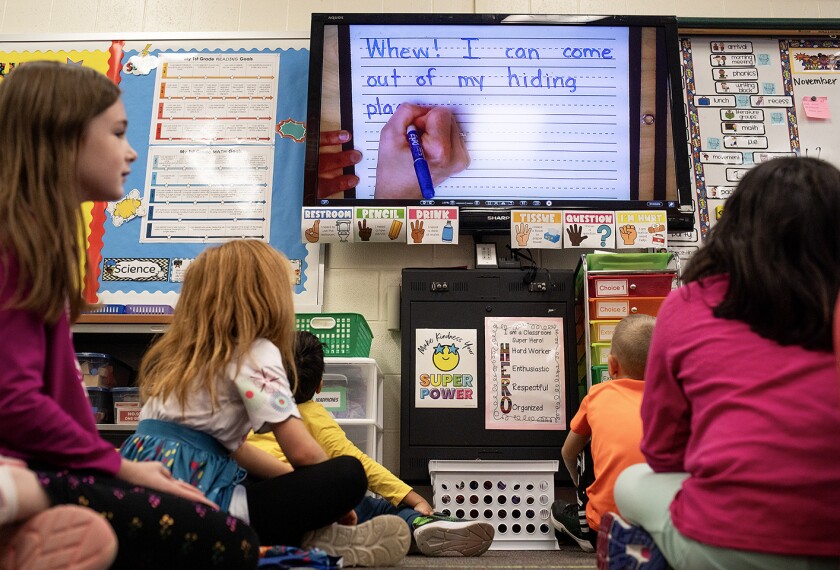Science one semester, social studies the next. Or social studies and science alternating every other day.
These are familiar schedules for the two subjects in elementary schools, where professional organizations have long argued that social studies and science are consistently marginalized in favor of the more frequently tested subjects of reading and math.
But this type of schedule, in which social studies and science compete for minutes, isn’t uncommon in middle schools, too. In the La Grange School District 102 in Illinois, the district’s one middle school has historically enrolled students in social studies and science in alternating semesters, so that students take each subject for only half the year.
“It felt like we were shortchanging them, both our teachers and our kids, by limiting core content areas to certain parts of the year,” said Chris Covino, the district’s superintendent.
But a new schedule for the 2025-26 school year would allot equal daily time for periods of English/language arts, math, social studies, and science.
The change, first reported by Illinois Patch, does come with a cost—it would also decrease daily time for ELA and math.
The choices in La Grange mirror those that middle school administrators face across the country, in these transitional years between the foundations of elementary school and the specialized coursework of high school.
Should they tilt schedules toward ELA and math, giving students extra time to shore up literacy and numeracy skills—especially now, as scores in these subjects have fallen nationally post-pandemic? Or should they balance instruction across subjects to reflect the daily science and social studies coursework that high schools require?
“The community was clamoring for more hands-on science instruction,” said Covino. “The question is, what do we give up for that? … We also know that some of the ELA, and some of the math curricular content, is furthered and solidified in the social studies and science classroom.”
Some parents worry about kids who need more support
Still, the schedule shift worries some parents, including Megan Utne, who raised concerns during an April 22 school board meeting about the potential for “academic risk.”
Utne supports increased time for social studies and science, but she thinks the magnitude of the cuts to ELA and math—from 72 minutes daily to 44 minutes—could disadvantage struggling students. Also next year, the district plans to increase access to advanced courses in ELA and math.
“There are going to be kids in there who probably will require more support, and they’re doing that at the same time as they’re cutting instructional time,” she said, in an interview.
Schedules tend to vary more in middle school than they do in elementary or high schools, said Katie Powell, the director for middle-level programs at the Association for Middle Level Education.
In high schools, states outline the credits that students need in each subject to graduate, a mandate that shapes how schools offer courses. States also shape requirements for elementary schools, often specifying how many minutes students need to spend in reading or math.
There aren’t as many hard and fast rules in middle school, Powell said.
The few data points that do exist about time allocation in the middle grades show that science and social studies get less class time than ELA and math, though the gulf isn’t as large as it is in elementary school.
In a study using federal data from the 2011-12 school year, principals reported that 8th graders spent 19.4% of weekly instructional time on ELA, 14.8% on math, and just over 12% in both social studies and science.
More recent data from the 2019 Trends in International Mathematics and Science Study, or TIMSS, found that teachers and principals in the United States said 8th graders received 154 hours of annual math instruction and 140 hours of annual science instruction.
Some research supports a more balanced course load
But research suggests a more even split could be beneficial for kids, said Gina Cervetti, a professor of literacy, language, and culture at the University of Michigan School of Education.
“There’s a lot of evidence that having knowledge about the world is important for reading comprehension,” she said. “Students who have broader bases of knowledge about the natural and social world do better on reading assessments, even when we’re controlling for other things.”
Middle school social studies and science classes can also hone students’ discipline-specific literacy skills, Cervetti said—the ability to read primary historical texts or research reports. Students will need those skills in high school classes.
There’s also a developmental reason to offer students regular access to social studies and science, said Powell. Middle schoolers are “really starting to explore who they are as human beings.”
For that reason, she said, “we really advocate that schools look at all courses as equally important to a student’s experience.”
Doing more with ‘the time we have’
Still, Powell doesn’t endorse one specific schedule over any others. Schools should identify their specific needs and values, and design around those, she said.
For Utne, the La Grange parent, that would look like more time for math instruction. Utne, who is also a math specialist in a different La Grange district, said she’d prefer district leadership allocate more time to subject areas where student data shows the lowest performance. (More students in the district met or exceeded expectations in ELA than in math, though La Grange 102’s scores in both subjects outperform state averages.)
The district also plans to implement a “flex” period this coming year for students to receive individualized support; Utne would prefer that some of that time instead be devoted to students getting more core instruction.
Regardless of exact dimensions of the schedule, middle school leaders need to ensure that teachers are prepared to maximize the time they have, experts said.
That could mean offering training for social studies and science teachers to incorporate discipline-specific literacy practices, so that more time for these subjects doesn’t mean students lose out on reading and writing, said Cervetti.
Or, it could look like providing resources and pacing guides to keep middle schoolers engaged for a longer English class on a block schedule, said Powell.
“Rather than getting lost in the weeds of which schedule works best—we don’t have hard data on that,” she said, “we should be thinking about what we do with the time we have.”






